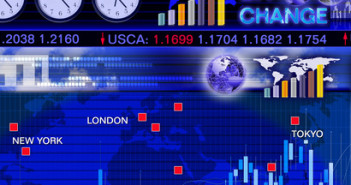During an overnight of pretty quiet trading, the main moving currency was the New Zealand Dollar, as the Reserve Bank of New Zealand, (RBNZ), intervened in the foreign exchange markets selling the currency down to a low of .8363. The reason for the intervention, according to RBNZ Governor Graeme Wheeler was to protect economic growth. According to Wheeler, “the kiwi has been the flavor of the month and we’d like the market to choose a new flavorâ€. The NZD had gained 4.2% against the other currencies this year, which is the strongest gain according to the Bloomberg Correlation-Weighted Indexes. A currency that is too strong can harm the home country’s economy.
And that was the exciting news in the currency markets overnight. The EUR stayed in a quiet range overnight (and in a symmetrical triangle), testing support at 1.3075, as well as resistance at 1.3120. Most trading analysts do not see the EUR breaking out of the trading its been in over the last few days. Bond yields in the peripheral countries such as Spain have narrowed versus yields in German bonds and analysts see that as a positive move. This reduction in spread is being seen as an offset to the weak economic environment in Europe and is helping keep the EUR somewhat bid.
The EUR has been orbiting the 1.3100 level over the last half hour as I am writing these comments, as traders are feeling comfortable with “risk-friendly†trading. While the technicals are still pointing towards a lower EUR, the fact that the single currency cannot break through the 1.3070 on the downside should keep the EUR rangebound over today’s trading session.
USD/CAD was another currency pair trading quietly overnight. Support at the 1.0040 level has held to this point, but is once again expected to be tested today. A break through 1.0040, will see a quicker move towards 1.0020. Resistance at 1.0060 held overnight as well.
Yesterday, equity markets saw the DOW close above the 15,000 level for the first time as traders are feeling optimistic over global central bank stimuli as well as better than estimated corporate earnings. According to analysts, this market has benefited from the easing by the FED as markets have seen more than $2.3 billion placed into the financial system since 2008.
“Risk-on†trading would seem to be the order of the day, which should keep the EUR, AUD, GBP and CAD bid against the dollar. Traders will also have a eye on the DOW this morning to see if the recent surge continues.
Further reading: AUD/CAD breaks to 6 month low – Parity on the way?



